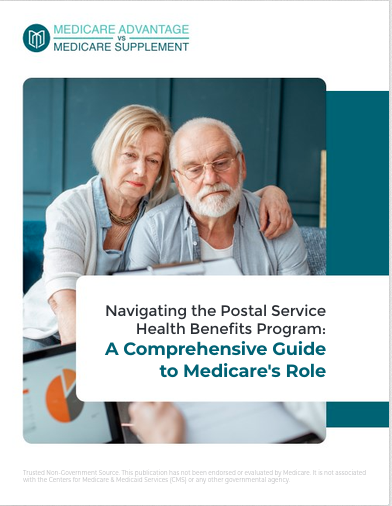Key Takeaways:
- Medicare Part A offers significant financial protection for hospital-related expenses, but understanding its coverage limits can help you avoid unexpected costs.
- Knowing how to navigate Part A’s hidden details can help you maximize your benefits and save on hospital bills.
What Is Medicare Part A, and Why Does It Matter?
Medicare Part A, also called “hospital insurance,” is one of the foundational components of Original Medicare. It covers inpatient hospital stays, skilled nursing facility care, hospice care, and some home healthcare services. While it’s generally premium-free for most beneficiaries, there are still costs to consider, including deductibles and coinsurance.
This coverage can provide a safety net when facing substantial medical expenses, but it isn’t all-encompassing. Misunderstanding what Part A does and doesn’t cover could leave you with unexpected bills. Knowing where to look for savings starts with understanding the nuances of this critical program.
Unlocking the Secrets Behind Part A Eligibility
If you’ve worked and paid Medicare taxes for at least 10 years (40 quarters), you’re eligible for premium-free Medicare Part A. Those who don’t meet the work requirement may still enroll by paying a monthly premium.
However, eligibility isn’t just about you. If your spouse meets the work requirements, you could qualify for premium-free Part A through their work record. This little-known detail can make a huge difference in retirement planning, especially if your own work history falls short.
How the Part A Deductible Works
One of the most critical costs to understand is the Part A deductible. In 2024, the deductible is $1,632 per benefit period. But what’s a benefit period? It’s not the same as a calendar year. Instead, a benefit period starts the day you’re admitted to the hospital and ends 60 days after you’ve been discharged.
This means you could face multiple deductibles in a single year if you’re hospitalized more than once with gaps longer than 60 days between stays. Understanding this timeline can help you plan for potential out-of-pocket costs and avoid unpleasant surprises.
Coinsurance Costs: Breaking Down the Numbers
After meeting the deductible, coinsurance kicks in. For hospital stays, Part A covers:
- Days 1-60: Fully covered after the deductible.
- Days 61-90: You’ll pay $408 per day in coinsurance.
- Days 91 and beyond: Lifetime reserve days come into play, with a $816 per day coinsurance cost for up to 60 additional days.
Once you exhaust lifetime reserve days, you’re responsible for all costs. These figures highlight the importance of understanding how long hospital stays might impact your finances.
Skilled Nursing Facility Coverage: A Hidden Gem?
Part A doesn’t just cover hospital stays—it also helps with care in a skilled nursing facility (SNF) after a qualifying inpatient hospital stay of at least three consecutive days. Here’s how it breaks down:
- Days 1-20: Fully covered by Part A.
- Days 21-100: You’ll pay $204 per day in coinsurance.
- Days 101 and beyond: You’re responsible for all costs.
To qualify, the care you receive must be medically necessary and related to the condition treated during your hospital stay. Planning for these costs can be tricky, but knowing the timeline can help you prepare.
Watch Out for Observation Status
Here’s a common pitfall: being admitted under “observation status” rather than as an inpatient. Even if you stay in the hospital overnight, observation status is considered outpatient care, meaning Part A won’t cover it.
Why does this matter? Without an inpatient designation, you can’t qualify for SNF care under Part A, potentially leaving you with significant out-of-pocket expenses. Always check your admission status and, if necessary, ask your healthcare provider to change it.
Hospice Care: A Critical Benefit
Part A also provides essential coverage for hospice care if you’re terminally ill and choose comfort care over curative treatments. It covers a wide range of services, including:
- Pain relief and symptom management
- Counseling and social services
- Certain medications
While hospice care is largely covered, there may be small copayments for medications and respite care. These minimal costs make hospice one of Part A’s most affordable and invaluable benefits.
Home Health Services: Limited but Valuable
Another benefit under Part A is home healthcare, but it’s often misunderstood. To qualify, you must be homebound and need intermittent skilled nursing care or therapy services. Coverage includes part-time nursing care, physical therapy, and medical social services.
However, durable medical equipment like wheelchairs or walkers falls under Medicare Part B, so don’t expect Part A to cover those costs. Understanding these distinctions can help you make informed decisions about your care options.
What Isn’t Covered by Part A?
While Part A covers a lot, it doesn’t cover everything. Services not included are:
- Private rooms (unless medically necessary)
- Personal items like toiletries or TV rentals
- Long-term custodial care in nursing homes
These gaps make it essential to understand how to fill in the blanks, either through supplemental coverage or careful financial planning.
Timing Matters: Enrollment Periods and Penalties
Missing your initial enrollment period (IEP) for Medicare can result in late penalties. For Part A, this could mean a 10% premium increase if you don’t qualify for premium-free coverage and delay enrollment. The penalty applies for twice the number of years you were eligible but didn’t enroll.
Your IEP lasts for seven months: three months before, the month of, and three months after your 65th birthday. Enroll on time to avoid unnecessary costs.
Maximizing Savings Through Coordination
Many people pair Medicare Part A with other coverage options to save money, such as Medicare Supplement (Medigap) policies or Medicare Advantage plans. These options can help cover deductibles, coinsurance, and other gaps in Part A coverage.
If you’re still working and have employer coverage, coordinating benefits with Medicare can also help minimize out-of-pocket expenses. Always consult with a benefits coordinator or advisor to ensure you’re making the most of your coverage.
Proactive Tips for Managing Hospital Bills
Here are some practical ways to keep hospital costs in check with Medicare Part A:
- Verify Coverage Before Admission: Always confirm whether your hospital stay is classified as inpatient or outpatient.
- Track Your Benefit Periods: Understanding how benefit periods reset can help you anticipate costs.
- Review Your Bills: Mistakes happen. Check for errors in billing and appeal if necessary.
- Explore Financial Assistance: Programs like Medicaid or state assistance may help cover gaps in Medicare coverage.
Why Knowing the Details Matters
By understanding Medicare Part A’s intricacies, you can take control of your healthcare costs. From knowing how deductibles and coinsurance work to recognizing hidden pitfalls like observation status, the more informed you are, the better equipped you’ll be to save money and avoid unnecessary stress.
How Understanding Medicare Part A Can Save You Money
When it comes to hospital bills, knowledge is power. Medicare Part A provides robust coverage, but only if you fully understand its rules and limitations. By taking the time to educate yourself, you can avoid costly mistakes, maximize your benefits, and protect your finances in the long run.









